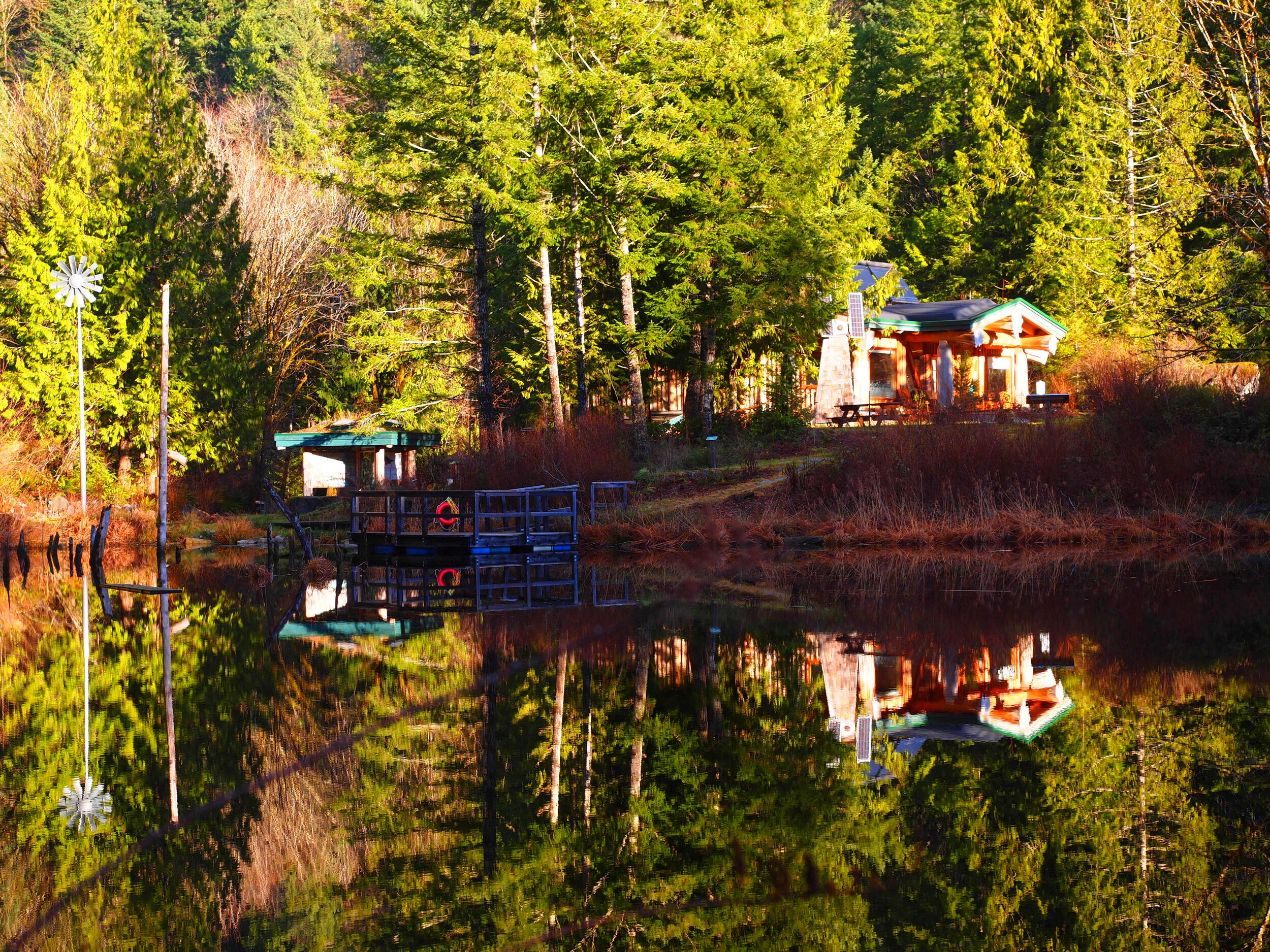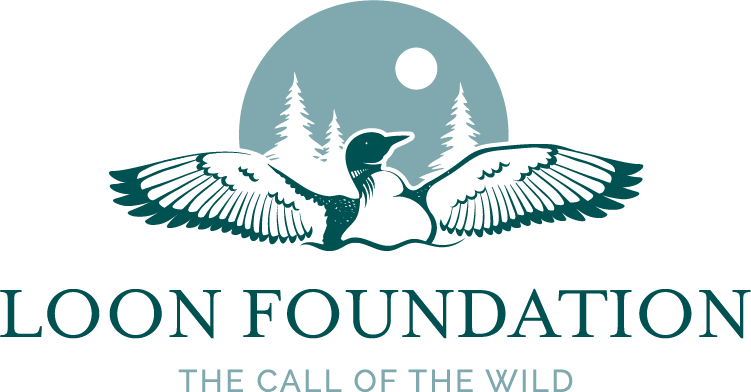
Wonders of Watersheds
The Wonders of Watersheds Program is designed to offer elementary and secondary students the opportunity to experience multiple ecosystems within the Anderson Creek watershed, learning about the biological communities that exist within them as well as the services they provide to human society.
Elementary school students will engage in a series of field trips where they can explore different environments and learn to handle living organisms safely, gaining an appreciation for the massive amount of biodiversity that exists all around them. Secondary school students will learn how to collect scientific data using the same techniques and equipment used by professional researchers, gaining a first-hand experience of how environmental science is performed.
Through fieldtrips and workshops over the course of four days the students will explore eight different aquatic habitats: freshwater lakes, spawning creek habitats, wetlands, estuarine habitats, intertidal, harbour habitats, inshore microhabitats, and subtidal.
The Wonders of Watersheds Program offers different curricula designed for either elementary or secondary school classes. Elementary school trips will focus on teaching students how to respect and interact with nature, and how to explore their habitat in a safe and non-destructive manner. In addition to exploration, secondary students will be given the opportunity to gather real scientific data on the aquatic environment, with potential for individual student research projects in the future.
Donations help support our many ongoing community and education programs, including the Wonder of Watersheds!
How does Wonders of Watersheds work?
Elementary school trips will focus on teaching students how to respect and interact with nature, and how to explore their habitat in a safe and non-destructive manner. The topic of connections, whether between organisms or between the habitats themselves will be revisited during each trip. Activities will include catch-and-release of smaller organisms such a invertebrates, games, open explorations, and observation of different science techniques.
In addition to exploration, secondary students will be given the opportunity to gather real scientific data on the aquatic environment, with potential for individual student research projects in the future. They will have the chance to use different experimental techniques and equipment, and they will be encouraged to develop their own questions based on what they observe in the field. Secondary school programming will include several guest lectures by regional experts on freshwater and marine systems.
Both elementary and secondary school students will undertake fieldtrips that focus on the following habitats:
1. Freshwater Lakes
· Elementary: Children will observe amphibians in the field and learn about their life-cycles, from tadpole to adult. Activities will include pond dipping, where students can collect small invertebrates in buckets and pour them into trays at an observation station, using dissection microscopes to draw what they see.
· Secondary: Secondary students will focus on observation and collection of stickleback fish, a well-studied and fascinating group with notable nesting and mating behaviours. Observations will be made and recorded in the field, after which specimens will be collected and brought back to the classroom for closer observation using minnow seine nets.
2. Spawning Creek Habitats
· Elementary: Salmonids are an economically and culturally important group in Canada, and the Anderson Creek watershed contains valuable spawning habitats for several species. Elementary students will be transported to John Daly Regional Park during salmon spawning season, where they can observe the spawning safely from a raised platform. They will also watch a demo of a salmon dissection, during which they will be instructed to label different parts of the salmon on a hand-out. They will learn about the role of salmon as a nutrient source for both people and animals, as well as the cultural significance of this group to First Nations.
· Secondary: Secondary students will have the opportunity to get much closer to the salmon, with small groups being taken out in shifts to undergo short creek walks and learn how to properly enumerate salmon as part of a larger monitoring project. Dependent on the timing of this part of the program, they may also learn how to monitor juvenile fish and spot signs of disease. They will also learn to collect measurements of water quality, such as temperature and pH.
3. Wetlands:
· Elementary: Many small but ecologically important invertebrates live within the soft, nutrient-rich sediments of wetlands. Children will be shown how to carefully collect these invertebrates for observation under the dissection microscope. They will also observe the many plants and birds commonly found in wetlands and learn about the role that each group plays in the nutrient cycle.
· Secondary: Freshwater molluscs are a particularly good group for learning about complex life cycles, and so while secondary students will observe all the organisms within the wetland, they will focus on this group for the purpose of data collection. They will learn how to safely collect and accurately identify molluscs, while also collecting data on environmental parameters such as temperature and pH. Sediment samples will be collected and brought back to the classroom for further analysis under light microscopy, in order to observe and identify larval stages.
4. Estuarine Habitats:
· Elementary: The transition zone between the freshwater and marine environment provides the perfect opportunity to observe a huge diversity of organisms along the salinity gradient. For this trip, students will be allowed to openly explore the environment without structured activities, observing the organisms and patterns that interest them the most.
· Secondary: Similar to the elementary school students, secondary students will be encouraged to explore and look for patterns in distribution that fall along some environmental gradient. They will be taught how to measure salinity, as well as how to identify common estuarine species (both floral and faunal) in the field. They will also be asked to identify at least one potential distributional or morphological pattern (i.e. changes in abundance of a species, or changes in how that species physically appears).
5. Intertidal:
· Elementary: Rocky intertidal zones are some of the most biodiverse habitats on the planet. As in the estuarine habitat trip, children will be encouraged to explore and observe the organisms that interest them most (of which there are many to choose from!). They will learn proper “beach etiquette” in the handling of both critters and the places in which they live, particularly the importance of putting things back where they have been found. Students will be shown how to safely collect common species, which will be identified and observed for a time in tanks set up at the beach, after which they will be released.
· Secondary: For secondary students, this trip will offer training in classic ecological survey techniques, such as the use of transects and quadrats, as well as field identification of both floral and faunal species commonly found in the intertidal. This trip will provide students with a greater understanding of how environmental factors such as temperature, light availability, desiccation, and wave exposure can all change with tidal height and season, and how these factors can affect the distribution of key species and groups.
6. Harbour Habitats:
· Elementary: Harbour habitats such as Irvines Landing have many human-built structures, such as docks, that can themselves act as settlement space for a variety of interesting sessile organisms. Our instructors will pull up ropes and tires hanging underneath the Irvines Landing dock, so that students can observe the myriad seaweeds and invertebrates that have made this place their home. A GoPro camera linked to a screen will also allow students to observe these same organisms underwater.
· Secondary: While human-built structures may augment habitat, they can also heavily disrupt the existing ecosystem, introducing issues such as water contamination or sound pollution from increased boat traffic. Secondary students will be able to choose from a variety of data collection techniques, such as underwater photography (using GoPro cameras), recording underwater sounds (using hydrophones), and measuring local weather patterns (using a programmable weather station), to explore their own questions regarding the complex impacts of anthropogenic structures in the marine environment.
7. Inshore Microhabitats:
· Elementary: Wherever water is found, one can also find an abundance and diversity of both phytoplankton and zooplankton. Students will be shown how to collect potential plankton samples from various marine sources, such as the water around Irvines Landing dock and organic substrates such as seaweeds, and freshwater samples will be provided for comparison. Students will be able to observe and draw what they see in the samples under a dissecting microscope, while learning about the role plankton plays in food-webs.
· Secondary: Secondary students will have the opportunity to perform a plankton tow off a boat in harbour waters, using different sized nets and taking samples from various depths. Samples will be brought back to the classroom to be viewed under light microscopy, and students will learn how to identify some of the major and most commonly found plankton groups.
8. Subtidal:
· Elementary: ROVs, or Remote Operated Vehicles, are an excellent way to observe both mobile and sessile species in the subtidal from the safety of dry land. Each student will have the chance to temporarily steer the ROV (under the watchful supervision of an instructor!), while others watching write down their observations as they watch on a connected screen.
· Secondary: Secondary students will be shown the basics of how to make their own ROV using PVC pipe, a bilge pump motor, and a GoPro camera. Students will then use the demo ROV to explore the subtidal environment around Irvines Landing. Students will also collect data from data loggers that have been deployed in various spots within the harbour previously, so that they can learn to analyse large environmental data sets and look for temporal and spatial patterns. Students will be encouraged to think about how these technologies can be used to answer questions about climate change.

